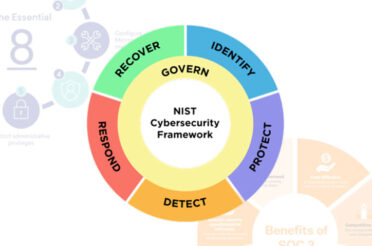The way we work has transformed dramatically in recent years, and cybersecurity must evolve to keep pace.
In 2024, 36.3% (Remote Work & Working From Home Statistics Australia (2025)) of Australians worked from home, a significant rise from pre-pandemic levels. This shift has reshaped how companies operate, with security being one of the most critical areas impacted.
To protect your employees and data in 2025, traditional security approaches are no longer sufficient. A modern strategy is essential, and endpoint security is a cornerstone of this shift. In this post, we’ll explore what endpoint security entails, why it’s critical, and how you can implement it effectively.
Why Do We Need Endpoint Security?
An endpoint is any device that connects to a network, such as your company’s network. This includes laptops, smartphones, tablets, desktop computers, servers, and more.
Historically, these devices were typically located in a central office or headquarters. Today, they’re dispersed across diverse locations—employees’ homes, coffee shops, airports, co-working spaces, and beyond.
Additionally, many organizations have moved from centralized systems to decentralized, cloud-based, Software-as-a-Service (SaaS) solutions. This evolution renders traditional cybersecurity approaches, which relied on protecting a defined perimeter with tools like firewalls and antivirus software, inadequate for today’s needs.
In 2025, a new approach to security is non-negotiable.
How Endpoint Security Works
Endpoint security focuses on securing individual devices rather than a specific location or network perimeter. It employs tools like Endpoint Detection and Response (EDR), antivirus software, device encryption, and patch management to protect against threats such as ransomware, phishing, malware, and unauthorized access.
Here’s a closer look at key components of endpoint security:
- Endpoint Detection and Response (EDR): Continuously monitors endpoint devices to detect threats, investigates incidents, contains risks, and remediates issues.
- Data Loss Prevention (DLP): Monitors and prevents unauthorized data transfers to safeguard sensitive information.
- Firewalls: Control incoming and outgoing traffic on each device, adapting traditional perimeter-based protection to individual endpoints.
- Patch Management: Tracks and applies software updates to address known vulnerabilities.
- Application Control and Whitelisting: Prevents unauthorized software or applications from running on your organization’s devices.
A New Way of Thinking About Security
Relying on pre-2019 security strategies puts your business at risk. The distributed nature of modern work demands a shift to endpoint security to protect the devices employees and clients use to access your network—whether they’re remote, hybrid, or occasionally outside the office.
At Aryon, we specialize in guiding businesses through this transition, providing the tools and expertise needed to adopt endpoint security effectively in 2025.
Recommendations for Enhanced Endpoint Security
- Adopt Managed Detection and Response (MDR): MDR services provide 24/7 monitoring, threat hunting, and response capabilities, offloading the complexity of endpoint security management to expert teams. This ensures rapid detection and mitigation of threats across your devices.
- Leverage MDR for Scalability and Expertise: MDR solutions offer access to advanced analytics and skilled security professionals, enabling businesses to stay ahead of evolving threats without the need for an in-house security operations center.
Contact us to learn more about securing your organization with endpoint security.








